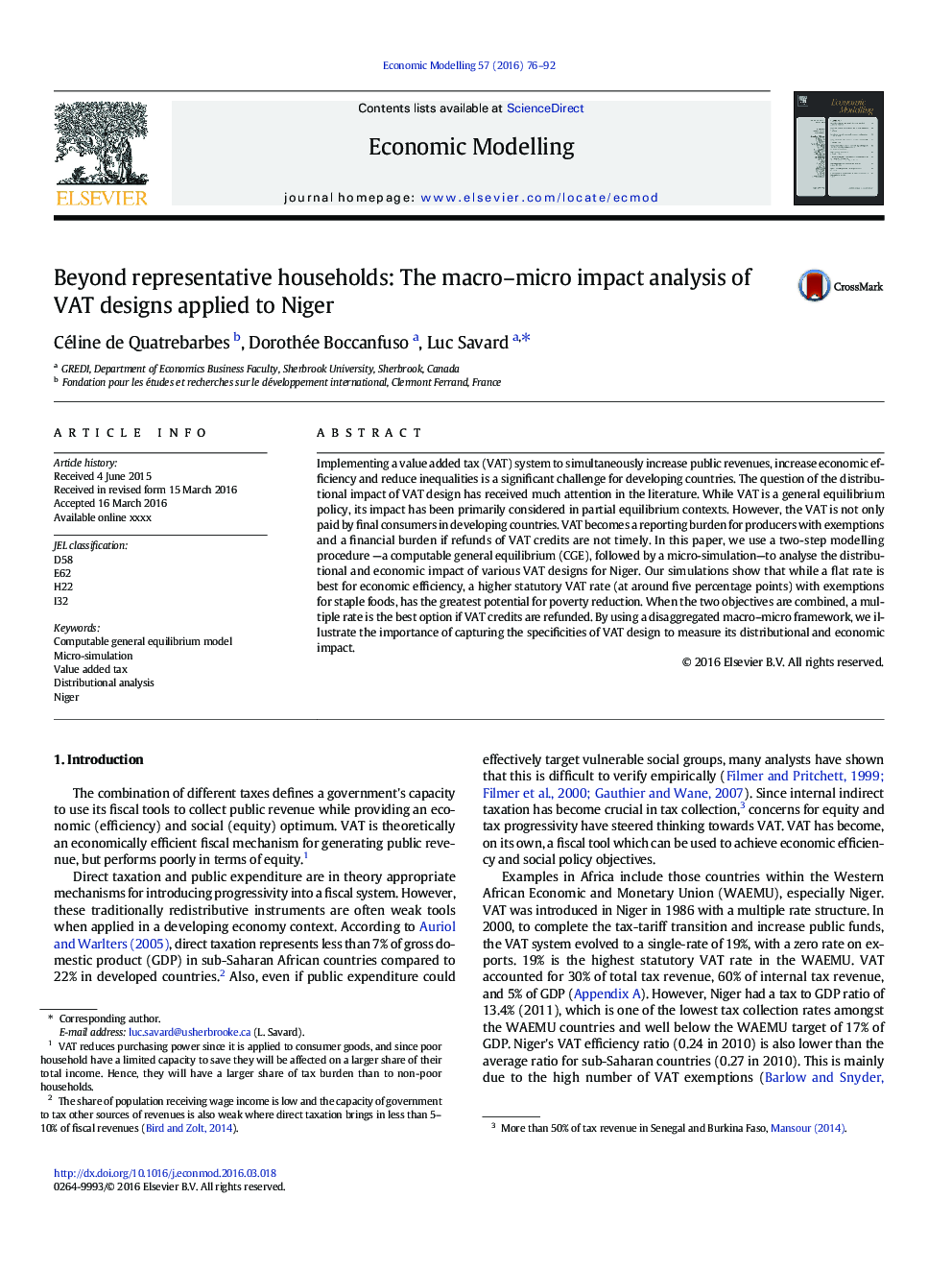| Article ID | Journal | Published Year | Pages | File Type |
|---|---|---|---|---|
| 5053348 | Economic Modelling | 2016 | 17 Pages |
Abstract
Implementing a value added tax (VAT) system to simultaneously increase public revenues, increase economic efficiency and reduce inequalities is a significant challenge for developing countries. The question of the distributional impact of VAT design has received much attention in the literature. While VAT is a general equilibrium policy, its impact has been primarily considered in partial equilibrium contexts. However, the VAT is not only paid by final consumers in developing countries. VAT becomes a reporting burden for producers with exemptions and a financial burden if refunds of VAT credits are not timely. In this paper, we use a two-step modelling procedure -a computable general equilibrium (CGE), followed by a micro-simulation-to analyse the distributional and economic impact of various VAT designs for Niger. Our simulations show that while a flat rate is best for economic efficiency, a higher statutory VAT rate (at around five percentage points) with exemptions for staple foods, has the greatest potential for poverty reduction. When the two objectives are combined, a multiple rate is the best option if VAT credits are refunded. By using a disaggregated macro-micro framework, we illustrate the importance of capturing the specificities of VAT design to measure its distributional and economic impact.
Keywords
Related Topics
Social Sciences and Humanities
Economics, Econometrics and Finance
Economics and Econometrics
Authors
Céline de Quatrebarbes, Dorothée Boccanfuso, Luc Savard,
